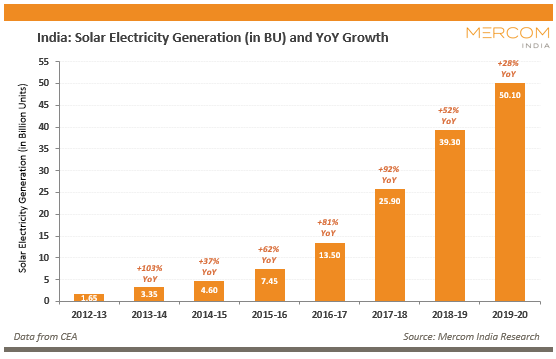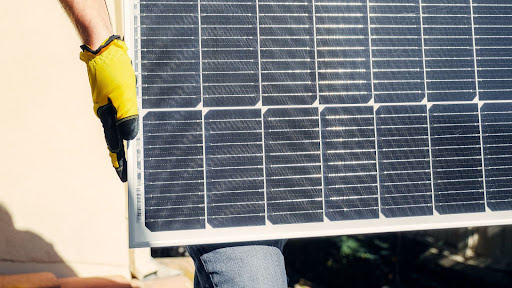NEWS
Textiles is a power intensive industry. However, the energy efficiency is poor. This is where solar steps in to optimize energy production and consumption.
Solar energy gives textile manufacturers control of one of the critical cost variables i.e. power, to supplement steady manufacturing operations.
The early adopters of solar power avail Renewable Energy Corporation benefits currently available, building a long-term differentiator for their businesses and a winning proposition in the marketplace.
The grid power costs are expected to escalate every year, while accessibility to grid power is also challenging, resulting in higher usage of diesel, increasing overall energy costs. It is essential to have energy security for the future and also minimize the current diesel consumption costs leading to faster payback of the solar investment.
Power dominates the consumption patterns in spinning/weaving, while thermal energy is major for chemical processing. Thermal energy in a textile mill is largely consumed in two operations, heating of water and drying of water.
Energy cost is around 15% - 20% of the production cost, next to raw material cost.
An average of 34% energy is consumed in spinning, 23% in weaving, 38% in chemical processing, and another 5% for miscellaneous purposes.
Electricity consumption is in the increasing trend, due to modernized machines and continuous usage of the equipment.
The textile sector is one of the largest and oldest industrial sectors in India. Even after technological developments globally, most of the mills use the same old technology.
The solar energy sector has seen rapid growth, as depicted in the graph below.
Energy consumption in Textile Industry

Solar utilization in Textile industries and its advantages.
With the evolution of the solar ecosystem in India, the textile industry has embraced solar power.
Industries using conventional energy pay higher electricity bills. By using solar energy, the cost remains almost constant, except for rare replacements and degradation.
Textile processing covers steps ranging from singeing (removal of protruding fiber) to finishing and printing of the fabric and manufacturing polyester, polyester fi filament yarn, acrylic, nylon, viscose, cotton textiles, etc.
Textile processing requires plenty of hot water in the range of 40–110˚C at various stages of the process. Adopting solar heating methods can amass a total saving of 383k tons per annum.
Such application of solar energy in the textile industry has the potential of saving Rs. 770 crore per annum. A total saving worth Rs. 13,940 per annum has been identified in the sector according to PGCIL.

Government’s Aid
As per reports, the Union Cabinet approved the production-linked incentive (PLI) scheme for textiles for a budgetary outlay of Rs 10,683 crore to boost domestic manufacturing of man-made fibres (MMF), garments, and technical textiles.
Incentives worth Rs 10,683 crore to be provided over five years for manufacturing these products. The scheme is focused at expanding MMFs and technical textiles' value chain and will help India regain its dominant status in the global textile trade.
Most of the manufacturers in India are unaware of the available subsidies and where to reach for installation of a new source of energy.
Said one of the leading textile manufacturers speaking to Saur Energy International. He added that the complexity of subsidy structure & involvement of too many agencies makes it more complicated for the industry to go solar.
Click for more incentives and milestones.
Reach out to us to size your solar system and to know more about various incentives available.